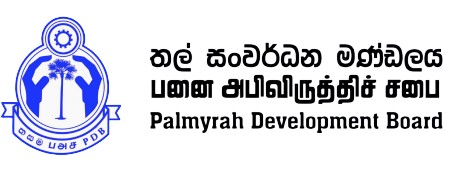The Palmyrah-focused exhibition and panel discussions at the World Entrepreneurs’ Day and Trade Fair – 2025, held on the 25th and 26th of August at the University of Vavuniya, attracted wide attention. The sessions inspired sectoral experts, entrepreneurs, students, and policymakers to think in new directions about the future of the palmyrah sector.
As a special guest, Dr. N. Anandarajah, Professor at the Tamil Nadu Agricultural University, India, delivered a keynote speech on “Value Addition in Palmyra & Its By-Products: Avenues & Scope”. His presentation was a rare opportunity to learn about a wide range of value-added palmyrah products developed in India, including nutritious palm jaggery, health drinks, modern forms of palm sugar, confectionery, dry foods, and eco-friendly items made from palm leaves.
These showcased products highlighted how value addition has positioned Indian palmyrah products in global markets, opening new possibilities for the Northern and Eastern regions of Sri Lanka as well.
The economic potential of palmyrah is remarkable. It is estimated that the Northern and Eastern regions have nearly 12 million trees, each offering multiple layers of use. With systematic utilization, thousands of employment opportunities could be created, alongside significant growth in regional income.
Moving beyond traditional production, there is a critical need to adopt modern technologies and innovative marketing strategies to transform palmyrah into value-added products. For example:
Bottled palmyrah sap can be marketed as a natural health drink globally.
Palm jaggery can be branded and exported as organic sugar.
Palmyrah leaves and husks can be turned into eco-friendly packaging materials.
Such initiatives could multiply the economic value of palmyrah many times over.
Universities and research institutions must also play a vital role in this transformation by innovating technologies, introducing new production methods, training entrepreneurs, and studying international market needs. If universities spearhead research programs related to palmyrah, new pathways will open up for both students and entrepreneurs.
The Palmyrah Development Board and Palmyrah Cooperative Societies should work closely with local farmers and small-scale entrepreneurs to develop market-oriented products, while also providing financial support, market linkages, and technical assistance.
From a sustainability perspective, palmyrah is often called the “guardian of dry lands” due to its role in conserving water, preventing sand drift, and maintaining ecological balance. Thus, palmyrah development is not only a pathway for economic growth but also a foundation for environmental protection.
Palmyrah, the cultural and ecological symbol of the Northern and Eastern provinces, remains an untapped treasure. With sound policy guidance, research support, entrepreneurial growth, and international market connections, it can indeed become a regional economic driver.
The World Entrepreneurs’ Day and Trade Fair – 2025 marked an important beginning in raising this awareness. The ideas shared at the event provide hope for shaping a new path toward the future economic development of the Northern and Eastern regions.

